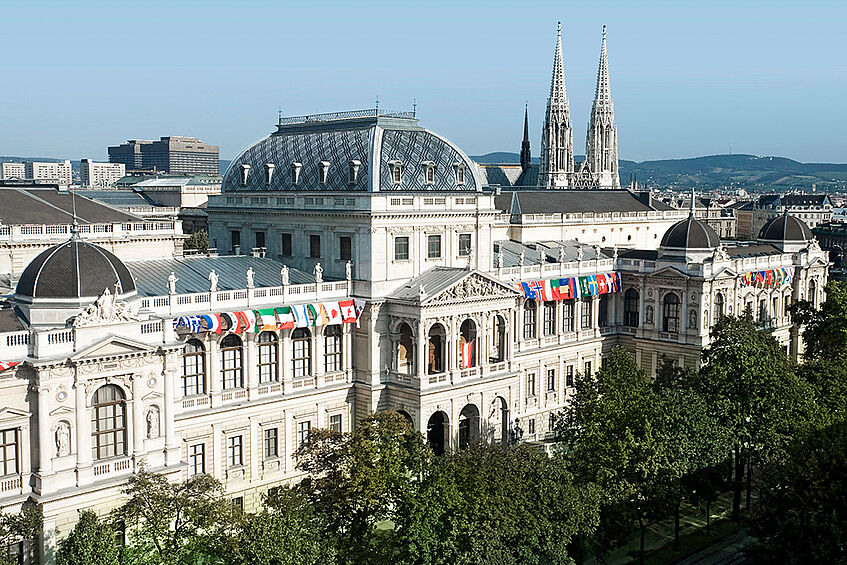Sights
Vienna City Card
Experience the city with the convenient and low-cost Vienna City Card for 24, 48 or 72 hours. Use the included Wiener Linien travel ticket, the hop-on hop-off tours of Big Bus Tours and additionally enjoy more than 210 benefits.
You can choose between the red Vienna City Card and the white Vienna City Card:
- The red Vienna City Card includes free use of public transport (subway, buses and trams).
- The white Vienna City Card offers the possibility to discover Vienna and all attractions with the Big Bus Vienna.
Click here for more information!
St. Stephen's Cathedral
St. Stephen's Cathedral and its famous Pummerin bell is Vienna's landmark. Construction commenced in the 12th century. Today, it is one of the most important Gothic structures in Austria. The local people also use the name "Steffl" for this impressive cathedral.
St. Stephen's Cathedral is 107.2 meters long and 34.2 meters wide. On the roof of St. Stephen's Cathedral, colorful roof tiles were laid to create the Royal and Imperial double-headed eagle and Vienna's coat of arms. The interior of St. Stephen's Cathedral was changed again and again over the centuries, right through to the Baroque period. In addition to valuable altars and side chapels, tmhe impressive cathedral treasure can also be seen, including relics decorated with gold and precious stones, monstrances, liturgical texts and books, as well as vestments.
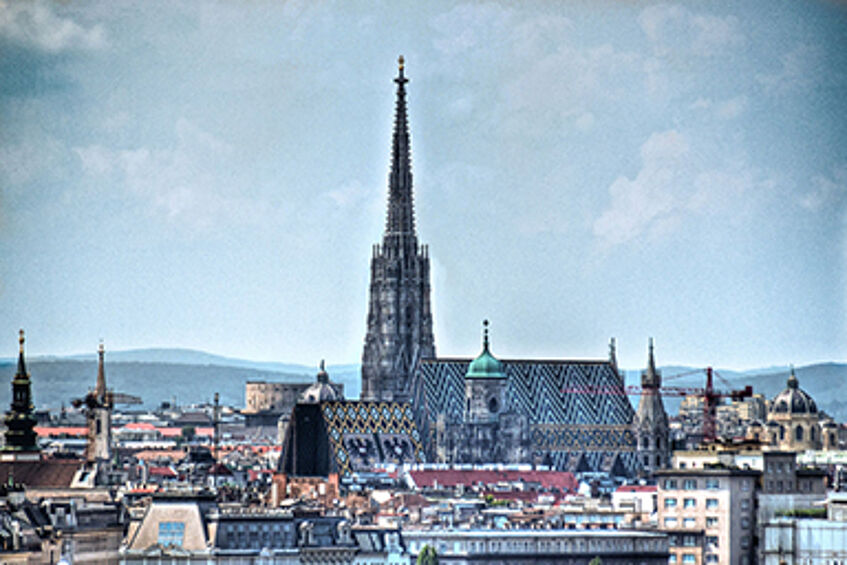
Schönbrunn
Schönbrunn, with the largest palace, is one of Vienna'a greatest and most visited cultural assets. The Schönbrunn Palace, the emperor family's former sommer residence, is one of Europe's most beautiful baroque structures. The palace and the approx. 390 acre enclosed garden park were declared UNESCO world heritage in 1996. One main attraction in the palace park is the world's oldest still existing zoo - Tiergarten Schönbrunn (40 acres). The Gloriette is one of the main eye catchers and is a lookout over the entire palace garden, which was built in 1775 as a "house of glory".
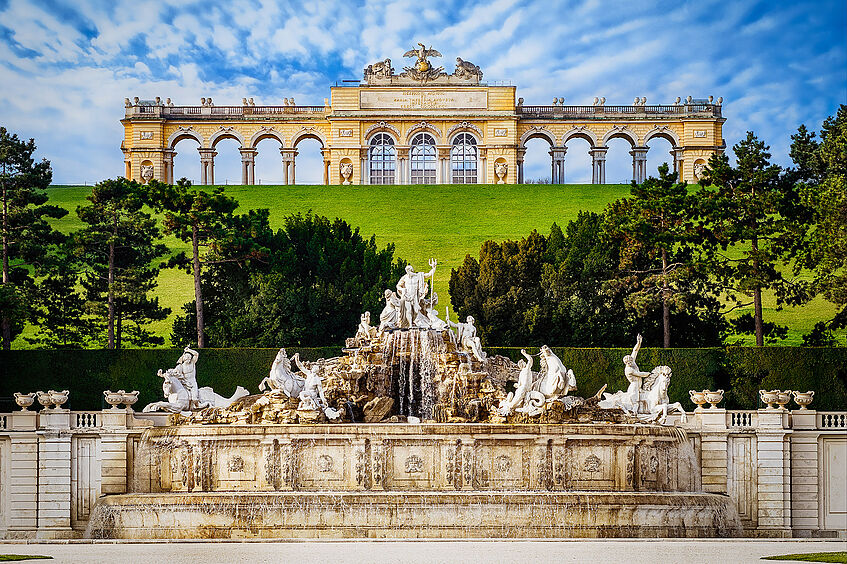
Danube Tower
826 feet in height, two express elevators taking you to the rotating restaurant for a splendid view (at 564 feet) within 35 seconds: the Danube Tower is another of Vienna's landmarks.
An excellent view of Vienna's old city and the Vienna Woods, as well as the environs of the city, weather permitting, can be enjoyed from the observation platforms.
The Danube Tower was built in 1964 on the occasion of the Vienna International Garden Show, of which the Danube Park is a lasting reminder. In the park, large meadows, extensive jogging paths, playgrounds and pretty flower beds form a lovely environment in which to relax.
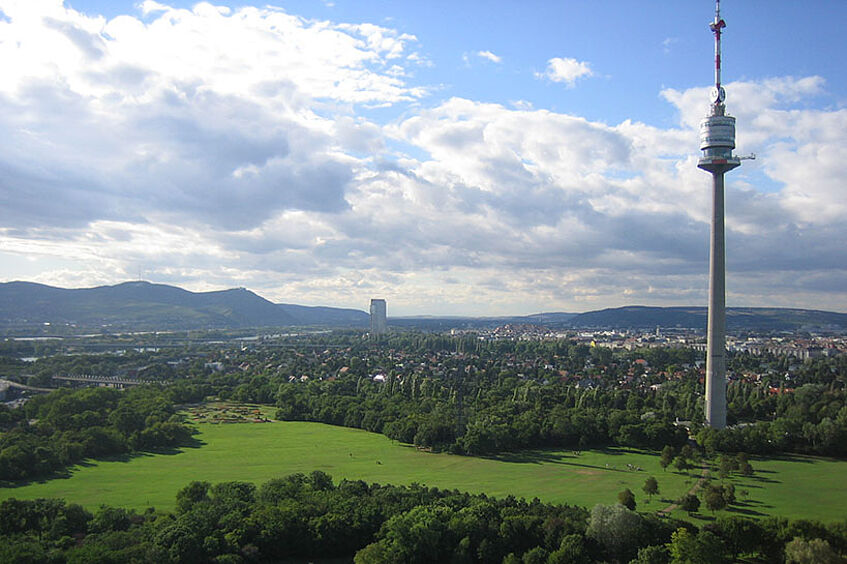
Vienna Giant Ferris Wheel and its Square
The Giant Ferris Wheel is open year round and is one of the most frequented attractions in the Danube metropolis. Ferris Wheel Square was redesigned in 2008. Today, the Giant Ferris Wheel offers an attractive adventure world: at the entrance area, a "Panorama" tells the history of this monumental ferris wheel and the City of Vienna – with nostalgic installations that drift past you in giant ferris wheel cars.
At the Riesenrad Shop, you can buy exquisite Viennese porcelain and crystal, models of the Riesenrad and high-quality textiles in the Riesenrad-Look. A café-restaurant provides culinary delights and pampers you in a cozy ambiance with Viennese specialties.
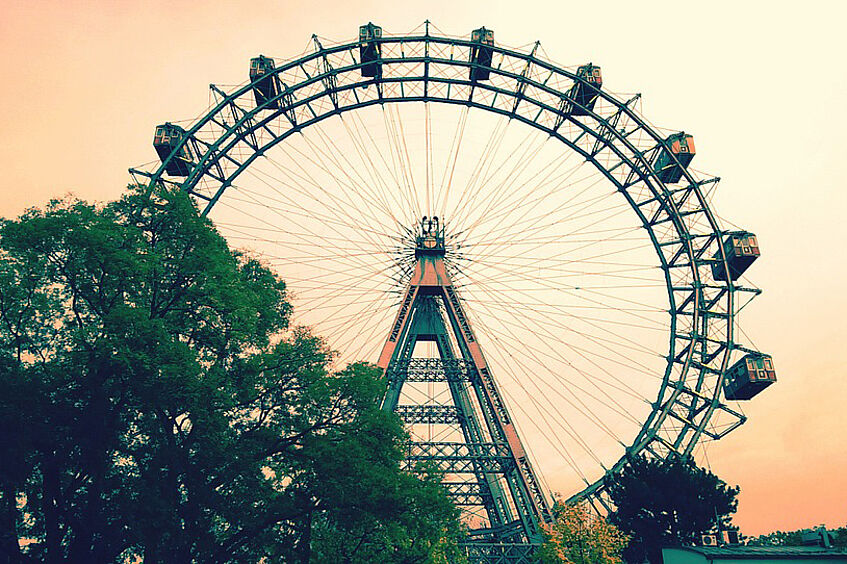
Hofburg
The Hofburg is an impressive building at the Heldenplatz with a long history. It is located at Vienna's grand boulevard, the Ringstrasse, and is reachable from there through the Burgtor gate.
Until 1918 the extensive palatial complex at the heart of Vienna was the political centre of the monarchy. Today it fulfils the same role for the democratic Republic of Austria. The Vienna Hofburg is a must for anybody wanting to explore the world of the Habsburgs. From the 13th century until 1918 the Hofburg was the main residence (with a few interruptions) for the Habsburgs and therefore also the residence for the emperor family in Vienna. Since 1945, the office of the Austrian Federal President is accommodated within as well as the Austrian National Library, museums, the chapel Hofburgkapelle and the Augustinerkirche.
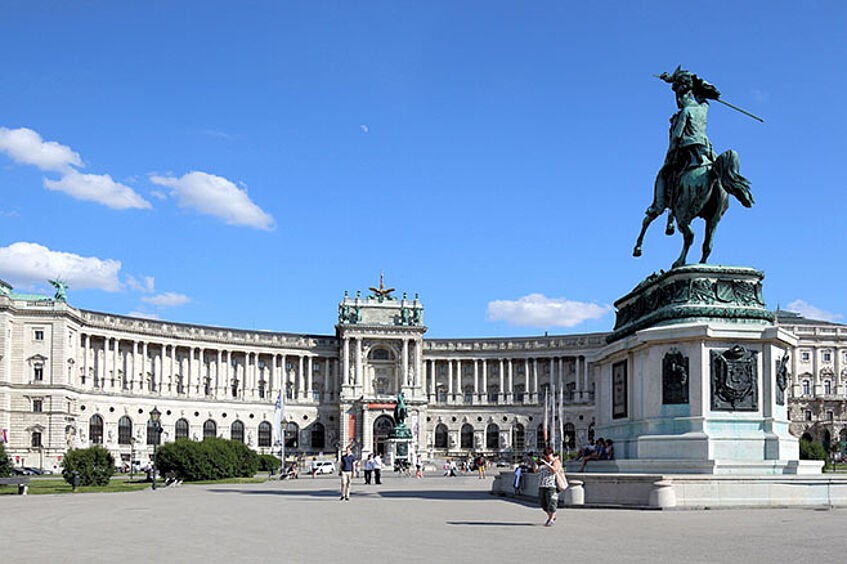
MuseumsQuartier (MQ)
The MuseumsQuartier (MQ) is one of the largest cultural quarters in the world. Located at the border of the old city in the former imperial stables, it combines institutions of different art fields, restaurants, cafés and shops in an area of over 640,000 square feet in a post-modern ambiance, a combination of baroque buildings and modern architecture. The following cultural institutions are located in the MQ: the Leopold Museum, the mumok - museum moderner kunst, the Kunsthalle, as well as the Architekturzentrum Wien. Moreover, the MQ provides numerous rooms and experimental areas for cultural initiatives. Furthermore, the Museum of Fine Arts, as well as the Natural History Museum are just within a few minutes walking distance. The MQ offers an ambiance that fits the urban lifestyle of its visitors: retaining the old, experiencing the new – and enjoying both of them together. Following this principle, a colorful and varied scene developed amid the setting of eminent museums and collections.
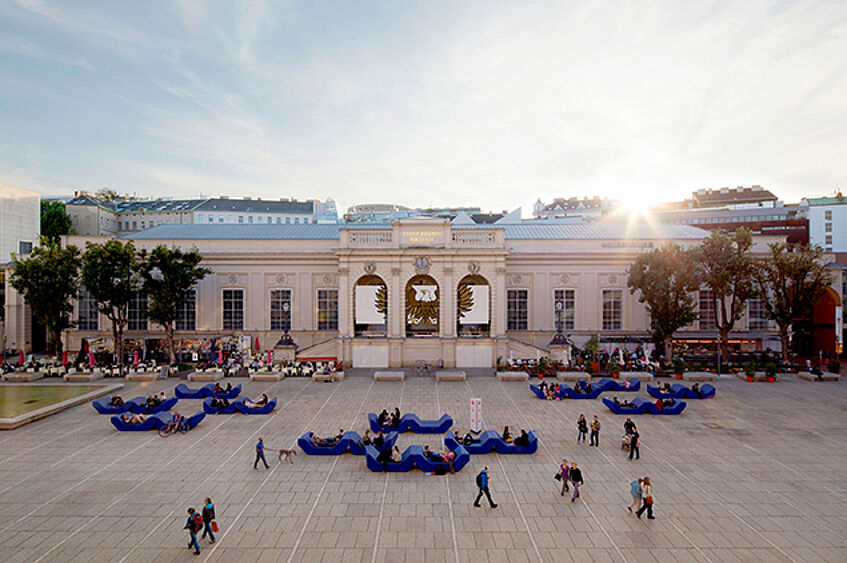
Rathaus
Friedrich von Schmidt, who had been the architect of the Cathedral of Cologne, designed and built Vienna's City Hall, the most important secular building in the neo-Gothic style in the city, between 1872 and 1883.
The height of the tower is 97.9 m, plus the so-called "Iron Rathaus Man", measuring 3.4 m (6 m including the flag) has another Vienna's landmarks. Vienna City Hall is the mayor's official seat and the meeting place of the city senate/provincial government and the municipal council/Landtag.
Numerous events are held inside and in front of City Hall. One of the most important and best known is without doubt the Life Ball, which is held every year in May. Numerous other balls are also organized in this wonderful building each year. Starting in November, the Advent Market in front of City Hall creates the right atmosphere in the run-up to Christmas. And from January to March, City Hall Square and City Hall Park transform into one of the most beautiful skating rinks in the world.
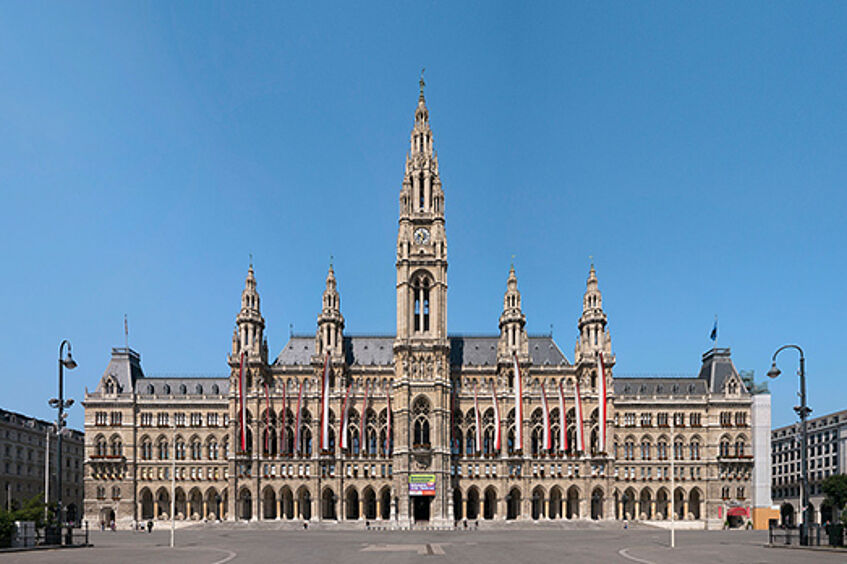
University of Vienna
The annual conference 2017 of the Verein für Socialpolitik takes place at the main building of the Universität of Vienna (Universitätsring 1, 1010 Wien) at the Ringstraße.
The University of Vienna was founded by Archduke Rudolph IV in 1365. It is the oldest university in the German-speaking world and one of the largest in Europe. In the field of research, the University of Vienna is subdivided into 19 faculties and centres.
With 175 degree programmes, the University of Vienna provides an opportunity for its currently approximately 94,000 students to acquire knowledge and methodological core competencies in the course of their studies and in the form of academic work under the supervision of academics.
The University of Vienna is a research university with an international reputation. Studying at the University of Vienna means meeting and cooperating with individuals of different origins, of varied cultural and social backgrounds and experiences. Thus, the University of Vienna continues to attract students from more than 140 different countries.
